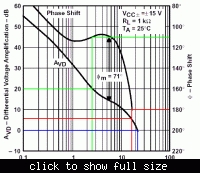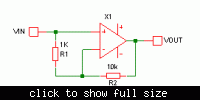godfreyl
Advanced Member level 5
Please see below.How you told that ? ( at 17 MHZ ? ) can you clarify it , please ?

- - - Updated - - -
Here is another picture.
The green lines show what happens if we make an amplifier with a gain of 20 dB:
- Loop gain = unity at 2.5MHz
- Phase shift at 2.5MHz is 110 degrees
- Phase margin = 180 - 110 = 70 degrees
- The amplifier is stable
- Loop gain = unity at 17MHz
- Phase shift at 17MHz is 180 degrees
- Phase margin = 180 - 180 = zero
- The amplifier is unstable. It may oscillate
- Loop gain = unity at 22MHz
- Phase shift at 22MHz is much more than 180 degrees
- Phase margin is much less than zero
- The buffer is unstable. It will oscillate

